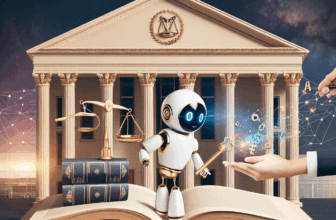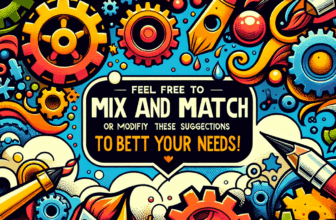Feel Free to Modify Any of These to Better Suit Your Vision!
Table of Contents
- Introduction
- Understanding Vision
- Strategies for Modifying Vision
- Real-Life Examples
- Addressing Common Questions
- Future Trends in Vision Modification
- Resources
- Conclusion
- Disclaimer
1. Introduction
In an age characterized by rapid technological advancements and an ever-changing socio-economic landscape, having a clear, actionable vision is more crucial than ever. This article aims to provide an extensive guide to understanding and modifying one's vision, whether in personal lives, careers, or broader organizational contexts. By delving deep into various aspects of vision, including its importance, types, and practical strategies for modification, we aim to equip individuals and organizations with the knowledge to not only redefine their trajectories but also to adapt to the evolving landscapes.
2. Understanding Vision
2.1 Definition and Importance
Vision, in a broad sense, refers to the ability to imagine, predict, or plan a future state. It serves as a guiding star, helping individuals and organizations navigate through challenges and opportunities alike. Understanding the concept of vision can be broken down into two primary facets:
2.1.1 Definition
Vision can be defined as a mental image of the future. It embodies aspirations, goals, and long-term outcomes that one desires to achieve. This definition applies universally, whether we are talking about personal life, professional careers, or entire organizations.
2.1.2 Importance
- Direction: Vision provides a clear direction and purpose. Whether an individual or an organization, having a distinct vision ensures efforts are aligned toward common goals.
- Motivation: A compelling vision encourages and motivates stakeholders. It fosters a sense of ownership and commitment to the objectives at hand.
- Resilience: In times of adversity, a well-defined vision acts as an anchor. It reminds individuals and organizations of their core purposes, helping them stay focused amidst challenges.
2.2 Types of Vision
The nature of vision can differ considerably based on context. Below, we explore several key types:
2.2.1 Personal Vision
Personal vision relates to an individual’s life goals—be it in career, relationships, health, or personal development. Questions to consider include:
- What do I want to achieve in the next five, ten, or twenty years?
- Who do I aspire to become?
2.2.2 Professional Vision
Professional vision pertains to one’s aspirations within a career domain. It's essential not just for individuals but also for teams and organizations. Sample questions might include:
- What impact do I want to make in my field?
- What skills do I need to develop to reach my career goals?
2.2.3 Organizational Vision
Organizations often craft missions to guide their strategies and operations. An effective organizational vision should be concise, clear, and future-oriented. For instance:
- What difference do we want to make in the world?
- How do we see our organization evolving?
3. Strategies for Modifying Vision
3.1 Assessing Your Current Vision
Before modifying a vision, it is crucial to assess the existing one. This stage involves introspection and external feedback.
3.1.1 Personal Reflection
- Journal Exercises: Maintain a vision journal where you record your thoughts, feelings, and aspirations. Reflect on what parts of your vision resonate or don’t resonate with you anymore.
- Visual Imagery: Create a vision board. A visual representation can help in clarifying what truly matters to you.
3.1.2 Seeking Feedback
- Peer Insights: Talk to friends, colleagues, or mentors. Their perspectives may reveal blind spots in your vision.
- Professional Evaluation: Consider consulting with a career coach or a life coach who specializes in vision building.
3.2 Tools and Techniques
Once you have a clear picture of your current vision, employing specific methods to modify it can be useful.
3.2.1 SWOT Analysis
A SWOT (Strengths, Weaknesses, Opportunities, Threats) analysis helps identify internal and external factors affecting your vision. This structured planning tool can yield insights that inform the necessary modifications to your vision.
Example: Conducting a SWOT Analysis
- Strengths: What are my unique skills and talents?
- Weaknesses: What are my limitations?
- Opportunities: What external factors can I capitalize on?
- Threats: What obstacles might impede my progress?
3.2.2 SMART Goals
Once the existing vision has been assessed, use the SMART (Specific, Measurable, Achievable, Relevant, Time-bound) framework to set new goals that align with the modified vision. Consider the following questions:
- What specific outcomes do I want to achieve?
- How can I measure my progress?
4. Real-Life Examples
Illustrating the modifications of vision in real life can provide further insights. Below are a couple of illustrative case studies:
4.1 Personal Case Study: Jane's Career Transformation
Jane began her career in a corporate setting, focusing on financial analysis. Over time, she realized that her true passion lay in environmental sustainability. Here’s how she modified her vision:
- Assessment: Jane created a vision board that highlighted her love for nature, animals, and conservation.
- Feedback: She engaged with mentors in the environmental field who gave her insights into possible career paths.
- Modification: Jane transitioned her career toward environmental consulting. She enrolled in sustainability courses to build her skills.
4.2 Organizational Case Study: XYZ Corp
XYZ Corporation initially aimed to be a leading manufacturer of traditional automotive vehicles. As the industry shifted toward electric vehicles, they faced a dilemma. Their vision modification process involved:
- Assessment: Executives conducted extensive market research, identifying growing demand for sustainable transportation.
- Feedback: Engaging with customers, employees, and industry experts revealed changing consumer preferences.
- Modification: XYZ Corp pivoted its vision to lead in electric vehicle innovation, investing in R&D for sustainable models.
5. Addressing Common Questions
5.1 FAQ Section
Q: How often should I revisit my vision?
A: It’s advisable to revisit your vision at least annually or whenever significant life events occur. Regular reflection allows for necessary adjustments to ensure it remains relevant.
Q: What if I feel lost in creating a vision?
A: It’s common to feel overwhelmed. Utilize tools like journaling, vision boards, or professional coaching to help clarify your aspirations.
Q: Can a vision change over time?
A: Absolutely! Life experiences, opportunities, and personal growth can lead to modifications of one's vision, and it’s perfectly normal to adapt.
Q: What if my vision conflicts with my current job?
A: If there’s a misalignment, consider ways to bridge the gap or explore alternative paths that are more in line with your aspirations.
6. Future Trends in Vision Modification
As we advance further into the digital age, several noteworthy trends are emerging regarding how individuals and organizations develop and modify their visions:
6.1 Impact of Technology
Emerging technologies, such as Artificial Intelligence (AI) and Virtual Reality (VR), play a significant role in vision modification. They open up new avenues for simulation, assessment, and feedback.
- AI and Analytics: Data analytics can provide insights that aid in vision refinement by mining user behaviors and preferences.
- Virtual Reality: VR can allow users to visualize potential future scenarios, providing a unique lens to assess personal or organizational visions.
6.2 Increased Emphasis on Sustainability
With growing awareness regarding climate change and social responsibility, there’s an increasing trend towards integrating social and environmental considerations in personal and organizational visions.
- Corporate Responsibility: Companies are increasingly adopting visions that emphasize sustainability and ethical practices, aligning with consumer preferences.
6.3 Collaborative Visioning
There’s a noticeable shift towards collaborative vision-building, especially in organizational contexts. Engaging all stakeholders—employees, customers, and partners—fosters a more inclusive vision.
- Workshops and Focus Groups: Utilizing workshops or feedback sessions can help gather collective input, ensuring the vision resonates on multiple levels.
7. Resources
| Source | Description | Link |
|---|---|---|
| Mindtools | Strategic planning techniques | MindTools |
| Harvard Business Review | Articles on organizational vision | HBR |
| SWOT Analysis Guide | Facilitates SWOT analysis | MindTools – SWOT Analysis |
| SMART Goals Framework | Goal-setting framework | MindTools – SMART Goals |
| Vision Board Guide | How to create effective vision boards | LifeHack |
8. Conclusion
In summary, a well-defined and adaptable vision serves as a critical guide in life, careers, and organizations. By understanding what vision is, assessing existing states, employing modification strategies, and considering future trends, individuals and organizations can not only navigate challenges but also thrive amidst changes. As you modify your vision, remember to engage with tools, reflect on your experiences, and seek external perspectives. As the world continues to evolve rapidly, so too must our visions—and staying adaptable will be key to success.
9. Disclaimer
This article is produced by AI and is in Beta Testing. The information provided in this article is intended for informational purposes only and should not be considered professional advice. Always seek guidance from qualified professionals for personalized recommendations.
This extensive guide serves as a comprehensive resource for anyone seeking to understand and modify their vision, drawing on practical strategies, real-life examples, and current trends. By prioritizing self-reflection and evaluating external perspectives, you can develop a vision that resonates, inspires, and adapts to life’s challenges.










